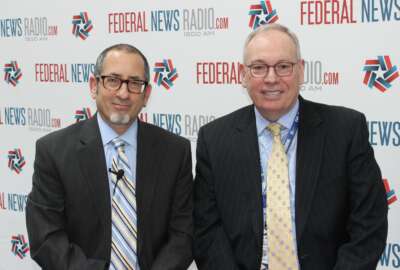
Navy turns to machine learning to help spot supply chain gaps
Naval Supply Systems Command has started implementing a private sector concept — an integrated supply chain control tower — to help eliminate shortages and...
Best listening experience is on Chrome, Firefox or Safari. Subscribe to Federal Drive’s daily audio interviews on Apple Podcasts or PodcastOne.
The Navy’s global supply chain for parts and other supplies is vastly complicated, and as things stands now, parts of the system have too much inventory, and others have too little.
To help solve the problem, Naval Supply Systems Command (NAVSUP) is turning to a concept that’s already taken hold in large commercial supply chains called an integrated supply chain control tower. In the Navy’s case, it means synthesizing vast amounts of data from government organizations and suppliers and applying machine learning algorithms to build better forecasts of what’s needed, where, and when.
As of now, NAVSUP’s control tower is still in a pilot phase. The command, working together with Naval Air Systems Command (NAVAIR), is using it to work toward a DoD mandate to get 80% of its F-18 fleet in mission-capable condition.
But Kurt Wendelken, NAVSUP’s vice commander, said the project has already found supply chain gaps that had gone unidentified until now.
“The idea of the control tower is that it enables the program manager to use the primary lever that they have to ensure readiness, which is providing funding to the right level for each of the readiness generators — maintenance, repair, repairable parts, engineering and brand new spare parts for the right level,” he said in an interview. “But it’s kind of unclear what the right level is — there’s a real integration effect that is needed. And there’s also a delay with these different kinds of inputs where they’re not always available as quickly as someone might need them. So the control tower addresses this problem.”
Wendelken said the Navy turned to the control tower idea after extensive consultations with industry, but the tool NAVSUP is using was developed specifically for the Navy’s needs. Those needs differ from commercial supply chains, not least because of the sheer number and variety of weapons platforms the command is charged with supporting.
Read more: Defense News
In the case of the F-18, it appears to be creating much more accurate forecasts of spare parts needs than were possible in the past largely because of the huge quantity of data it’s ingesting from NAVAIR, weapons maintainers, original equipment manufacturers and NAVSUP itself.
“We’re integrating data from each of the different parts of the supply chain and putting those into a single simulation, instead of the individual simulations that we used to do,” Wendelken said. “Using the single simulation, we’re now able to give a target to each part of the sustainment supply chain, as opposed to each part of the supply chain guessing with separate forecasts. In addition, we’ve taken historical data forecasts to use machine learning in our forecast. And what the machine learning does is it uses algorithms to predict changes in weapon system usage that we may not have captured through historical demand.”
In the near-term, since NAVAIR has already proven to be adept at providing the sorts of data that work well in the control tower environment, the Navy wants to expand the concept to build additional control towers for other aviation platforms. The service will then extend it to other weapons systems, eventually build toward the point where program managers and other users can see high-fidelity forecasts of the Navy’s entire supply chain.
“At the end of all this, we want the fleet to have fewer back orders and we want them to perceive a smoother supply system that’s supporting them when they need things to to keep their weapon systems up,” Wendelken said. “In the future, we don’t want the fleet to even have to deal with the backorder in the first place. As this initiative develops, I think we’ll get much better at predicting when we are going to have a need and have that material available to meet the need.”
Copyright © 2025 Federal News Network. All rights reserved. This website is not intended for users located within the European Economic Area.
Jared Serbu is deputy editor of Federal News Network and reports on the Defense Department’s contracting, legislative, workforce and IT issues.
Follow @jserbuWFED





